By Rick VanSickle
We’re in the middle of all the action in the Ravine Vineyard cellar, surrounded by an array of oak barrels and stainless steel.
I prefer tasting like this; raw and authentic, among the hoses, tanks and hustle-bustle of a working winery. Head winemaker Ben Minaker and assistant winemaker Eden Garry (below) have chosen to showcase retrospectives of three key varietals that perform very well at Ravine — Riesling, Chardonnay and Cabernet Franc — for us to taste and explore the influences that a wildly fluctuating Niagara climate has on the end result of the wines. Both winemakers buy into the notion that less is more — less intervention, less oak, natural fermentations. They let the vineyard and the grapes that grow there do all the talking.
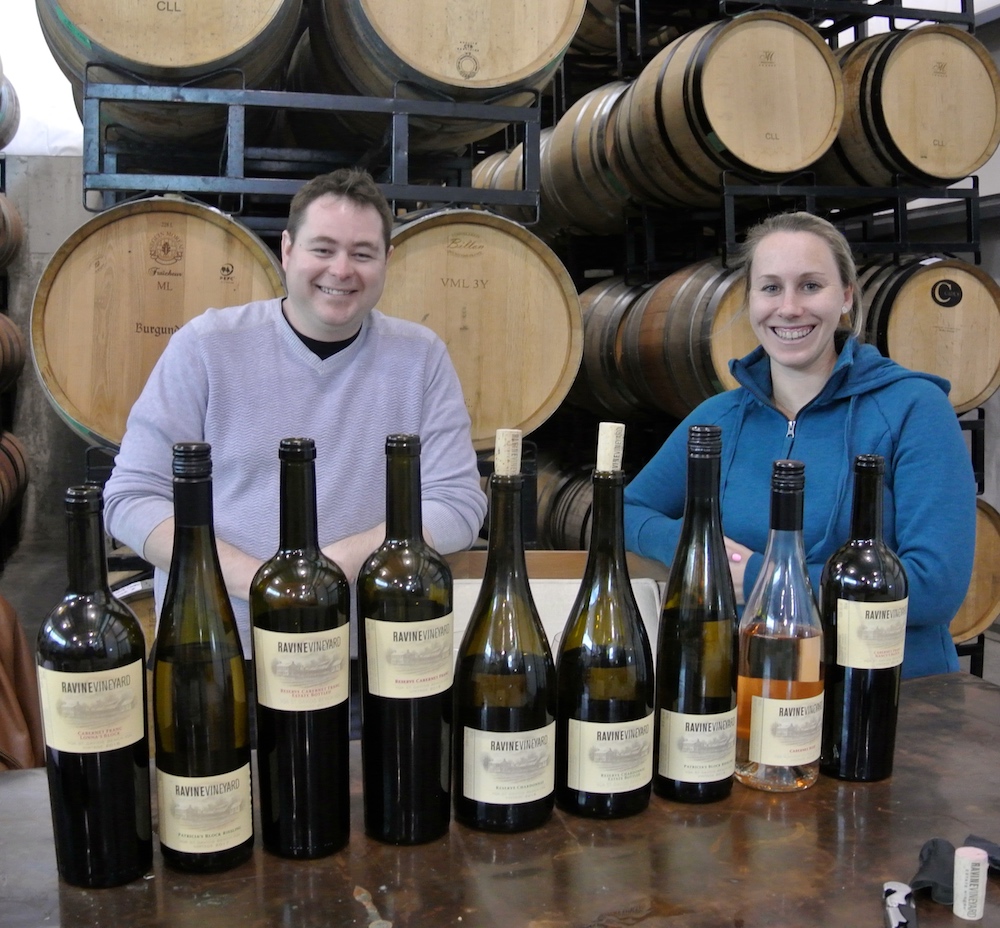
Ravine is a unique 34-acre organic winery located in the St. David’s Bench sub-appellation of Niagara. It is, as a rule, about 20% warmer than any other location in the Niagara Region.
Ravine’s soil is lighter, with a consistent airflow (except for one tiny pocket, read on) and water drainage through the vineyard because it is at the highest elevation of the St. David’s Bench, which makes it unique among its neighbours. The winery is blessed with an early bud break and a longer growing season.
“St. David’s is more about the sunshine and heat,” says Minaker. It’s all about more ripeness, developed fruit and darker colours in the red wines.
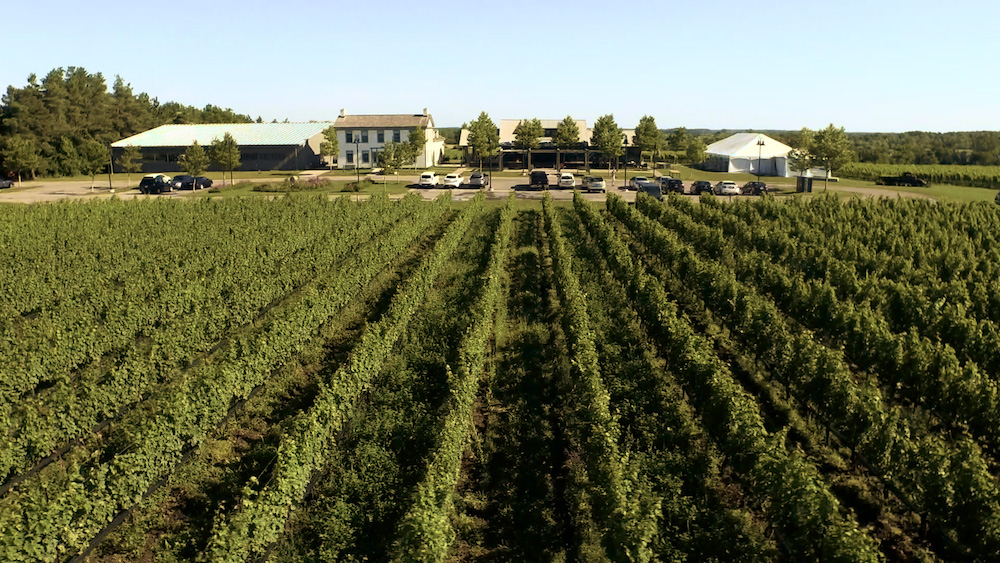
The 150-year-old family farm sits atop the ancestral channel of the Niagara River as it once raged 22,800 years ago. The hillside soils have eroded over the last 5,500 years on the small, but relatively steep, slopes. Now, the soil continues to be thin, sparse and very mineral-conducive to the growth of some very low cropping, Niagara-style varieties grown at the site.
Minaker, a second-generation Ontario winemaker with roots in Prince Edward County, developed his passion for terroir-driven Pinot Noirs and Chardonnays at his family-owned winery on the Adolphous Reach on the east side of the Bay of Quinte before travelling abroad to complete harvests in France and New Zealand.
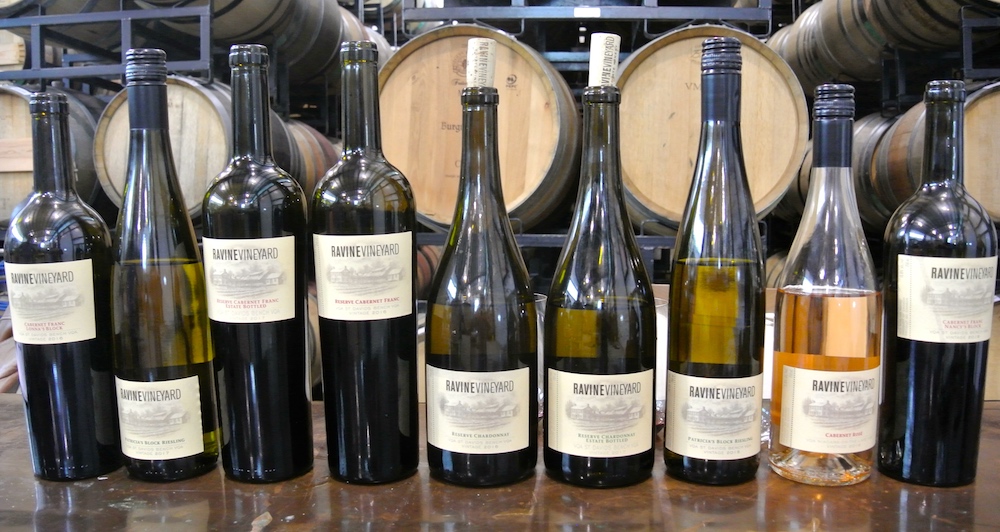
“It’s interesting for me,” he says as we start tucking into the wines. “I started in Prince Edward Count and Pinot Noir was it. But having now spent time at Ravine I’m shifting my allegiances to Cabernet Franc.”
And, my, oh my, how could he not with the fabulous fruit grown on the Ravine farm? Ravine’s Cabernet Francs have always been top of class with a riper profile than other Niagara Cabernet Francs but still maintaining a certain finesse and freshness through the core.
Here’s what I can highly recommend from our tasting recently at Ravine.
The rosé
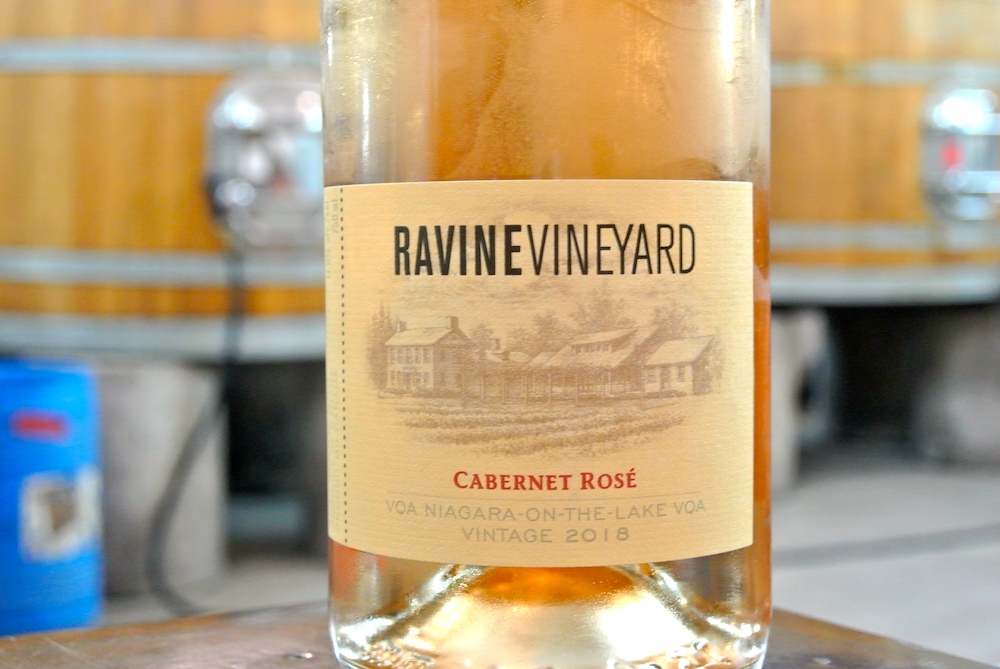
Ravine Vineyard Cabernet Rosé 2018 ($25, winery now, 90 points) — You will notice a common theme with red-grape based wines in Niagara from the 2018 vintage, including this 100% Cabernet Franc rosé. Deep, rich colours were hard to achieve from what was a hot summer and rainy fall. Minaker doubled down on the skin contact (48 hours) for this rosé yet, still, the colour on is on the Whiter Shade of Pale (thanks Procol Harum for the line) salmon than previous vintages. But the aromas and flavours, thankfully, are gorgeous with a nose of strawberry patch, watermelon, brambly raspberry and herbs. It’s beautifully dry on the palate with juicy red berries and underlying herbaceous notes all propped up by racy, mouth-watering acidity to keep if fresh and lively through the finish.
The Chardonnays
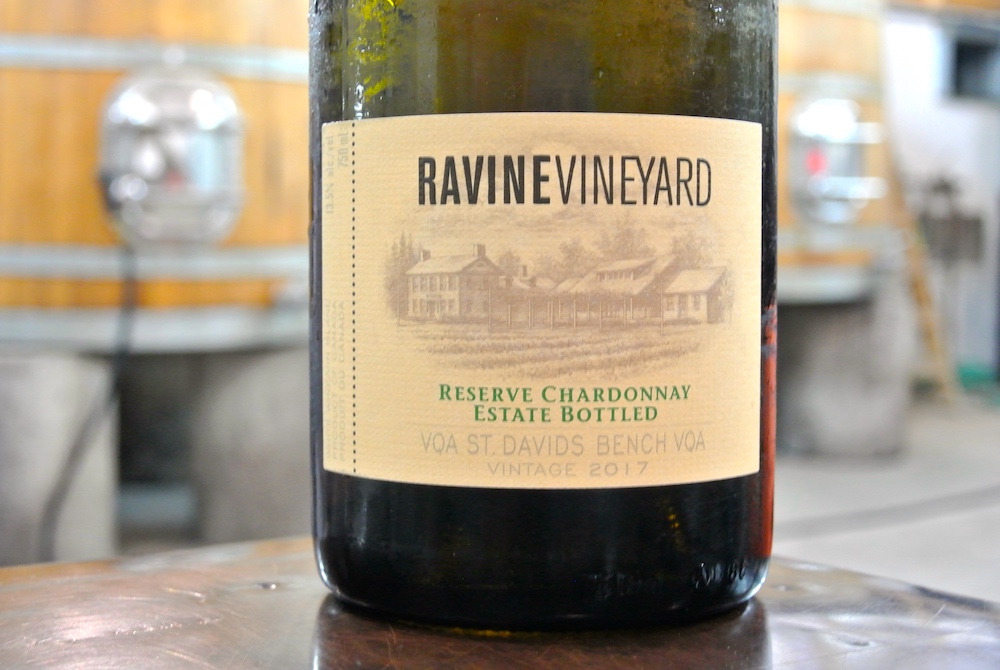
Ravine Vineyard Reserve Chardonnay 2017 ($55, at the winery later this month, 92 points) — The steep slope of the vineyard makes is necessary to hand pick all the fruit. The juice is wild fermented in barrel and spends 18 months in 100% French oak (50% new) for 18 months. It begins with an intriguing smoky, toasty, subtly reductive note on the nose then lovely pear, baked apple, just a hint of tropical fruit and flinty minerality. The palate is a mélange of creamy pear and apple/quince with smoky/flinty/reduction and elegant spice notes all leading to a finessed and vibrant finish. Crazy good Chardonnay. We tasted this beside the now sold out 2016 version from a warmer vintage, which was all of the above with a fuller, richer, spicier style with less reductive notes. Still maintains that finesse and verve on the finish.
The Rieslings
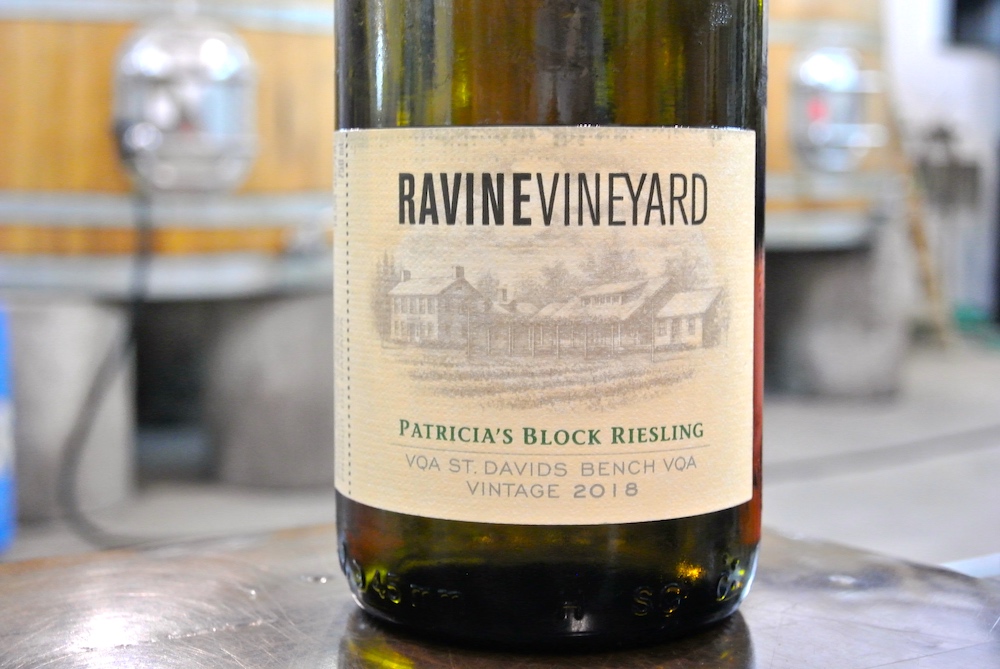
Ravine Vineyard Patricia’s Block Riesling 2017 ($35, 91 points) — One of the most unique Riesling vineyards in Niagara. There is a dip in the centre of the vineyard that creates a pocket that traps fog and moisture and promotes botrytis, which can be a problem if left to take on a life of its own. Ravine has always had up to 20% botrytis in the Riesling grapes from this vineyard due to the lack of air flow, and has learned to embrace the “gift” of noble rot that adds interesting flavours and complexity to the wines. The 2017 vintage has about 25% botrytis in the fruit and the residual sugar sits at 20 g/l. A beguiling nose of lanoline, honeycomb, white flowers, grapefruit, honeysuckle and citrus. Such a beauty on the palate with lime, grapefruit, ginger, tangerine and beeswax that is tangy and sweet at the same time with a mouth-watering, puckering finish.
Ravine Vineyard Patricia’s Block Riesling 2018 ($35, 93 points) — As good as the 2017 version is, this nails it perfectly. An incredible 50% of the fruit is botrytised and the wine was finished with a whopping 26 g/l of RS. Minaker finds this block of Riesling always offers an interesting floral and pine needle accent on the nose. For me, it’s rich in marmalade/citrus rind with honeysuckle, grapefruit, wild honey and lanolin. The RS is completely buried on the palate and shows bracingly tangy citrus fruits, particularly lime, with honeycomb accents that’s all mouth-puckering and fresh to the finish line. This will gain fat, beeswax and more rounded notes as it ages gracefully for 10 years or more. A really neat style of Riesling from St. David’s.
The Cabernet Francs
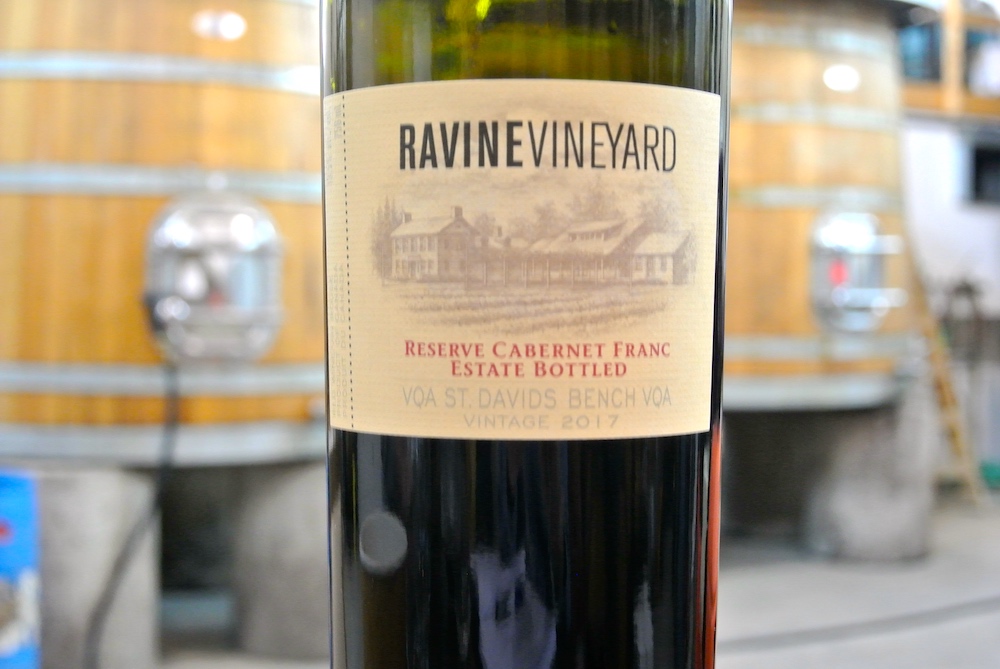
Ravine Vineyard Reserve Cabernet Franc 2017 ($65, winery at the end of summer, 91 points) — “We toned down the new oak. We want to do less new oak and highlight the sense of place,” Minaker says. The percentage of French oak for this reserve CF is 25% new while the rest is older barrels. It has a lovely and savoury nose with rich red fruits, underlying spice and herbs with a subtle note of pencil shavings. It has good structure on the palate that showcases savoury red berries, cassis, elegant oak stylings, polished tannins and nicely balanced through a long and finessed finish.
Ravine Reserve Cabernet Franc 2016 ($65, currently at winery, 92 points) — The strength of the vintage enabled winemakers to up the new French oak to 50% new for 18 months without overpowering the fruit. This is a bolder, earthier and spicier version of the above CF, with more black fruits of anise, black currants, crushed red berries, bramble and integrated herbs. It’s bold and structured on the palate and still evolving with mouth-filling dark fruits, polished tannins, licorice, herbs and finesse through the finish. Cellar 5-10 years for further integration.
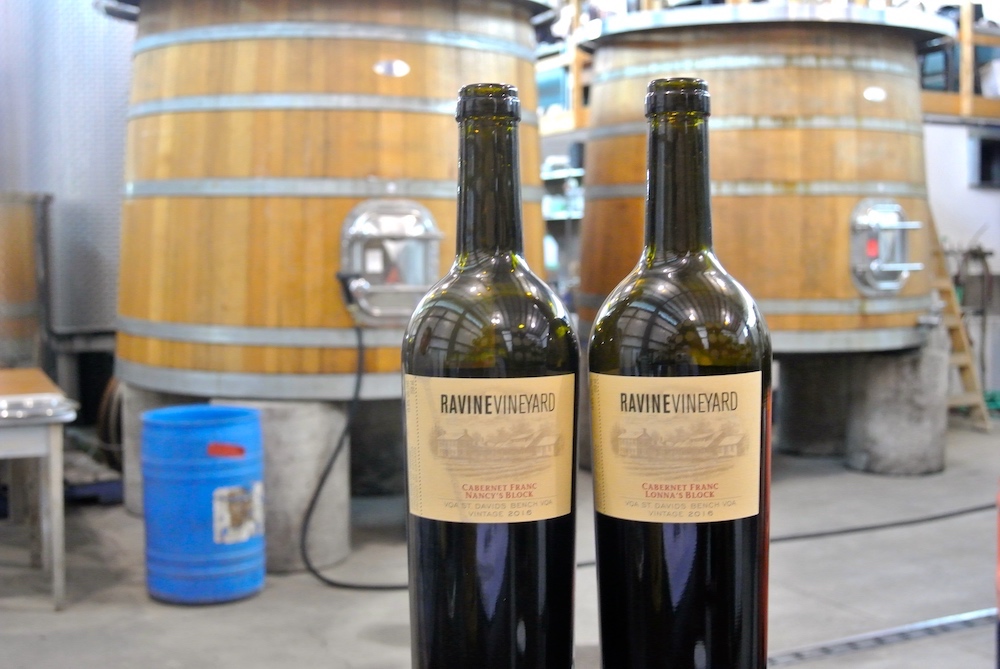
Ravine Nancy’s Block Cabernet Franc 2016 ($55, 93 points) — The winemaking team has discovered two distinct pockets of terroir in the estate vineyard (right side of driveway as you drive up to winery). For the Nancy’s Block, the ripening is slower and uneven and produces a more elegant version of Cabernet Franc. “We’re embracing the herbaceous here,” says Minaker. The grapes are hand picked, whole-cluster pressed (some of it foot-trodden), wild fermented and 9 months in large format French oak barrels (25% new). It has an attractive, classic floral/herbaceous nose of black currants, cassis, earthy red fruits and subtle spice notes. It is drinking beautifully right now and shows ripe black and red currants on the palate, raspberry bramble, herbs, savoury spices, melting tannins and such wonderful verve through the finish.
Ravine Vineyard Lonna’s Block Cabernet Franc 2016 ($55, 91 points) — The Lonna’s Block is distinctly different. The canopy is huge, says Minaker and the soil is sandier in this block so it’s riper than Nancy’s block and has a fuller fruit profile. The nose is bit shier at the moment and more masculine and powerful with dark fruits, savoury spices and underlying crushed red berries starting to emerge. It’s more open-knit on the palate with a range of black currants, dark cherries, anise and savoury spice notes all supported by ripe tannins and tangy acidity. This needs time to integrate and open up, say 4+ years. Profoundy different from Nancy’s block and an interesting horizontal of estate Cabernet Franc grown practically beside each other.






Comment here